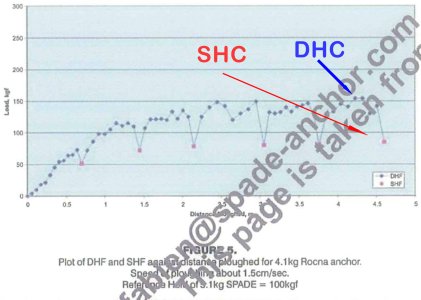noelex
Well-known member
That is Peter Smith’s (from Rocna) own website where he summarises the results of several anchor tests.Quite easily
Independent Anchor Performance Testing
Just check the holds from independent testing for Rocna.
Jonathan
It is perhaps not surprisingly a rather biased view.
The tests he quotes are independent, but his summary is not.
Many of the individual results, particularly the poor results relating to Rocnas is omitted. Reading this will not give you a realistic view of the expected performance. For example, the seperate results from the three different substrates measured in the extensive 2006 test is not reported. There are many other omissions.
I would encourage everyone to instead read the oringinal anchor tests. Most are available online if you search.
Modern anchors in a good substrate often do not have holding ability anything like 2000 kg. I think I made this clear in post #1 . Nor do they have a hold of 1000 kg in "difficult" substrates, as you claim in post #23 . The 2000 kg claim (and the 1000 kg claim in "difficult" substrates) are both a myth.Every time I mention the 2,000kg hold I mention 'in good holding'. I never say that the anchor holds 2,000kgs in every seabed. You enjoy selective editing.

